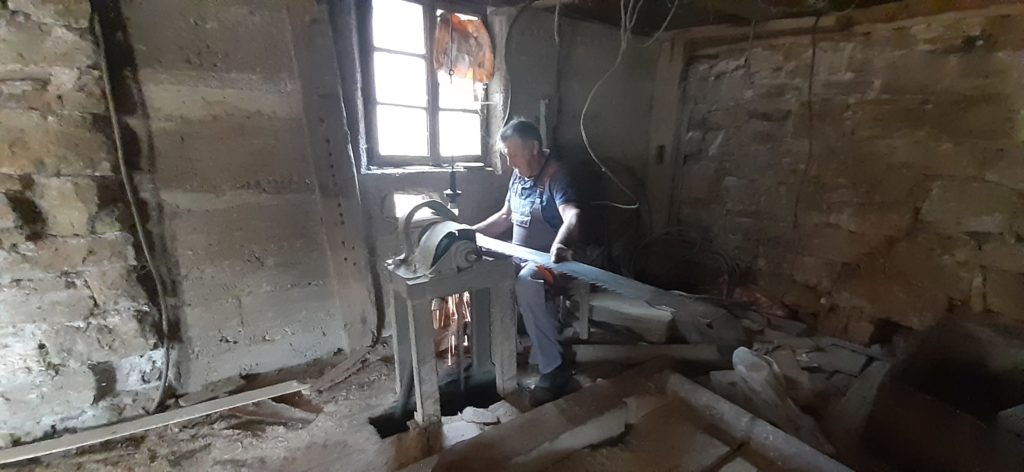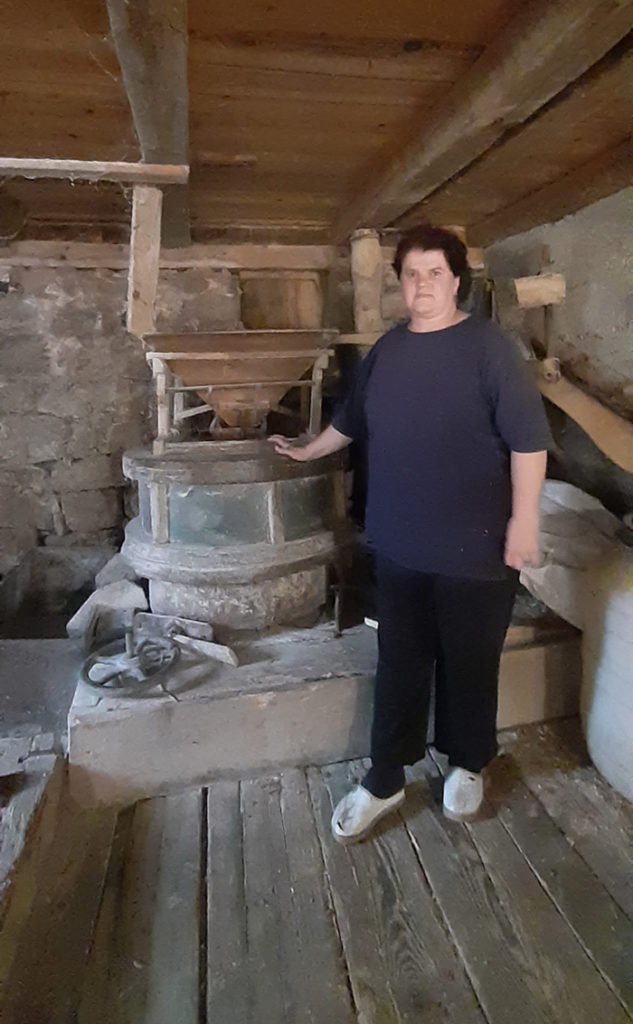In the village of Lug behind Ogulin Zagorje, below Modruš, the Loka stream flows, which was so small that long ago a man made a “gap” and diverted the water to his mill. He made a small gap that accumulated the water and now runs a sawmill and mill. The gap served to accumulate water during the dry season so that there was always plenty of water to turn the wheel. A sawmill, gate or frame saw was created inside the mill.

These were the first sawmills to work on the principle of a frame saw that moved perpendicular to the direction of the log, whilst the log was moved on a trolley that moved on rails. What is amazing is that this sawmill and this mill are still functioning today, although from its creation to this day, both the circumstances and mechanization have changed greatly. I this way, Vlado Žanić is preserving the tradition that was begun by his grandfather, he maintains it and lives next to the mill i.e. sawmill.

Over time, an electrically driven mechanism was added to the water one, so it runs on both.
The transmission forces thus drive the belts, and Vlado changes the belts depending on which power source he wants to start. In this way he runs a grain mill, for all kinds that you bring to him, then a sawmill, and also a machine with which he sharpens saw blades. The drive is normally below the ground, in the lower part of the sawmill. This is a large room in which the mechanism is located. On the sawmill deck itself, a small wooden canopy, the only working machine was a Venetian frame saw with a single saw blade. In some watermills, an electric motor was installed next to the turbines to drive the frame saw at a time when there is not enough water to drive the turbine. This rare example of a water-powered sawmill was the first industrial method of woodworking production. The first such plants had a Venetian frame saw that carried the tree trunk on a wooden trestle over just one saw blade that was the main working machine driven by a waterwheel. The construction of such sawmills was wooden, and the first sawmill in Croatia was built by the Paulines in Crikvenica in the 15th century. After Crikvenica, a sawmill was built in Čabar, and the rest of Gorski Kotar, and in Ogulin and Modruš, two were built between 1800-1830.

Over time, due to the uncertainty of the flow and power of the water, water-powered sawmills were replaced by steam sawmills, and later by electric-powered sawmills. They would have gone out of use a long time ago because realistically, there was no need for them any more if it was not for their heritage values and historical role in the development of sawmill wood processing.

It was idyllic for me to see Vlado and his wife, the last house in the village, below Modruš alongside the little stream, and how they live a self-sufficient life. Alongside the stream, they also have land that they use for their own needs of planting corn, potatoes, wheat, triticale and vegetables. He saws tree trunks, sharpens saw blades, and in this way prolongs the life of this example of sawmill and mill heritage.
Without doubt, it would be instructive and interesting for younger generations to see such an old mechanism run by just one man. Especially when it is located at the end of the village, under a hill, and by a stream, where it defies more than a hundred years of dizzying development, the modern way of life, and quietly and selflessly turns the wheel and cuts and grinds with a sound reminiscent of grunting.

There are more places on the property, the path from whose pond sedge grows, it can be seen on that Modruš path, i.e. the remains of Tržan castle, and through the still bare forest, we can also see some wild animals at this time of year. I would like to thank the Žanić family for their hospitality and the visit to their property in Lug.
Translation by Martin Mayhew